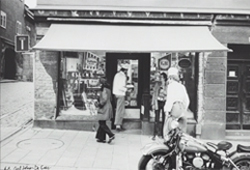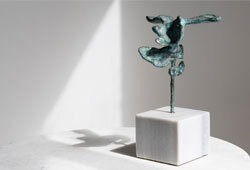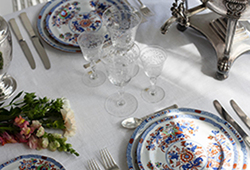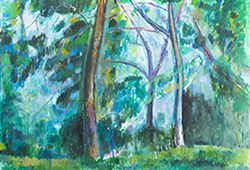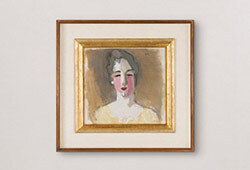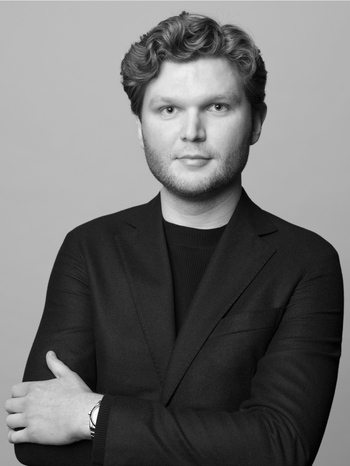Anna Petrus
a rare pewter table lamp, Firma Svenskt Tenn, Stockholm 1927.
Relief decoration of female figures and grape clusters, stamped with the coat of arms of Stockholm and the year mark A8. Height including shade 50 cm, lamp base height 29 cm.
Minor wear and patina, later shade with minor stains.
Provenance
Villa Tesdorpf, Skövde, designed by Ralph Erskine and constructed in 1954.
Designer
Anna Petrus was a sculptor and designer at the beginning of the 20th Century. After her death, Anna Petrus' work was almost forgotten, but in recent years, it been rediscovered. And now, her sculptures are sought after-objects.
She was born Anna Petersson, the daughter of a medical professor and a countess, and took the surname when she studied at the Academy of Arts. She inherited a small fortune at age 11 when her mother died, which enabled her to educate in London and travel to Italy and France. Anna Petrus had her international breakthrough at the Paris World Fair in 1925, where she displayed pewter and cast iron objects in the Swedish Grace style. At the time, pewter was a material that was considered unfashionable, but its popularity increased with designers like Anna Petrus.
In 1924, she began collaborating with the newly established Firma Svenskt Tenn. The lion became a recurring motif in Anna Petrus' production as sculptures and decorations.






